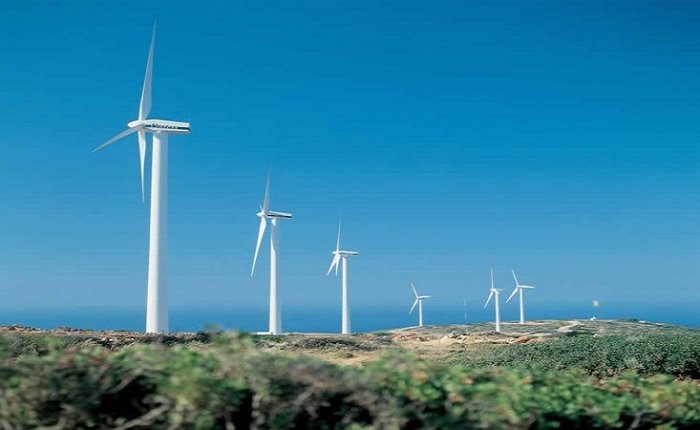
Harnessing wind energy through wind turbines has become a significant contributor to renewable energy generation globally. As we delve into the intricacies of wind turbine technology, one crucial aspect is how they connect to the power grid. Let's unravel the differences between single-phase and three-phase grid connections and understand their implications for wind energy systems.
Single-Phase Grid Connection: Simplified Power for Small-Scale Applications
Single-phase grid connections are akin to the solo performer on a stage, suitable for small-scale applications and residential setups. These systems utilize a single phase line and a neutral line for power transmission. Their simplicity makes them ideal for low-power scenarios, such as small household wind turbines or rural electrification projects.
One notable advantage of single-phase connections is their lower cost. With fewer components and simpler installation requirements, they offer a cost-effective solution for modest energy needs. Additionally, their straightforward design translates to easier installation and maintenance, making them accessible even to non-specialists.
However, single-phase grid connections come with limitations. Their power transmission capability is inherently limited due to the absence of additional phases. This constraint restricts their suitability for larger-scale applications and can lead to voltage and load imbalances within the system, affecting stability and efficiency.
Three-Phase Grid Connection: Empowering High-Power Applications
In contrast, three-phase grid connections offer a robust and dynamic solution tailored for high-power applications and industrial settings. These systems utilize three phase lines—A-phase, B-phase, and C-phase—along with a neutral line for power transmission. This triadic arrangement significantly enhances power transmission capacity and system stability.
The primary advantage of three-phase connections lies in their ability to handle high-power demands efficiently. With three separate phase lines facilitating power distribution, they provide ample capacity to meet the demands of large-scale wind farms, industrial operations, and commercial ventures. Moreover, their balanced design ensures better voltage and load distribution, enhancing system reliability and performance.
However, the advantages of three-phase grid connections come with added complexity and cost. Their sophisticated design necessitates more extensive equipment and specialized control systems, leading to higher installation and maintenance expenses. Additionally, their intricate nature may require skilled professionals for setup and troubleshooting.

Choosing the Right Connection: Balancing Needs and Resources
In summary, the choice between single-phase and three-phase grid connections for wind turbines hinges on the specific requirements and constraints of the project. Single-phase connections offer simplicity, affordability, and accessibility, making them suitable for small-scale applications. On the other hand, three-phase connections provide unparalleled power capacity, stability, and efficiency, albeit at a higher cost and complexity.
Understanding the dynamics of grid connections is crucial for optimizing the performance and sustainability of wind energy systems. By weighing the advantages and disadvantages of single-phase and three-phase connections, stakeholders can make informed decisions that align with their energy goals and resources. As wind energy continues to propel us towards a greener future, the importance of efficient grid connections cannot be overstated.

Are you ready to embrace a greener future powered by renewable energy? Look no further than OWELL Wind Energy—a leading provider of innovative wind turbine solutions tailored to meet your energy needs.
At OWELL, we understand the pivotal role that wind energy plays in driving environmental sustainability. That's why we offer a comprehensive range of on-grid and off-grid power solutions designed to harness the power of the wind efficiently and reliably.

On-Grid Power Solutions: Whether you're a homeowner looking to reduce your carbon footprint or a business seeking to integrate renewable energy into your operations, OWELL's on-grid power solutions have you covered. Our cutting-edge single-phase and three-phase grid connections ensure seamless integration with existing power infrastructure, empowering you to harness clean energy while maximizing efficiency and cost-effectiveness.
Off-Grid Power Solutions: For remote locations or areas with limited access to traditional power sources, OWELL's off-grid power solutions provide a lifeline of energy independence. Our off-grid systems combine advanced wind turbine technology with state-of-the-art energy storage solutions, delivering reliable electricity in even the most challenging environments. Whether you're powering a remote cabin, an off-grid telecommunications tower, or an agricultural operation, OWELL has the expertise and solutions to meet your off-grid energy needs.
Wide Range of Wind Turbines: At OWELL, we offer a diverse portfolio of wind turbines designed to suit various applications and power requirements. From compact turbines suitable for residential use to robust models engineered for commercial and industrial projects, our range of wind turbines delivers unparalleled performance, reliability, and longevity. With customizable options and expert guidance from our team, you can find the perfect turbine to drive your renewable energy initiatives forward.

Join the renewable energy revolution with OWELL Wind Energy and take a significant step towards a sustainable future. Contact us today to explore our comprehensive solutions and embark on a journey towards clean, renewable power generation. Together, let's harness the power of the wind to create a brighter tomorrow for generations to come.
Quick Link: